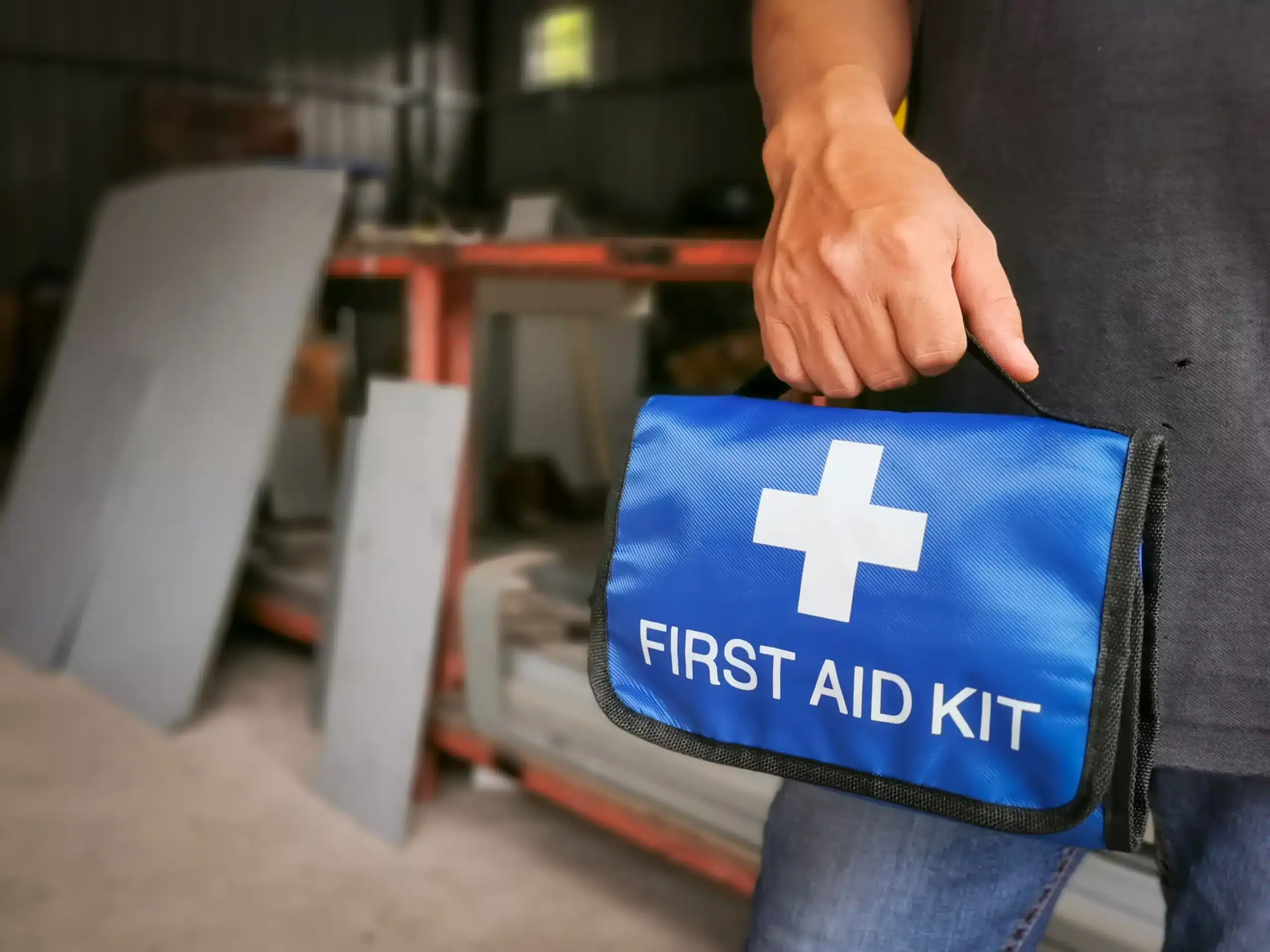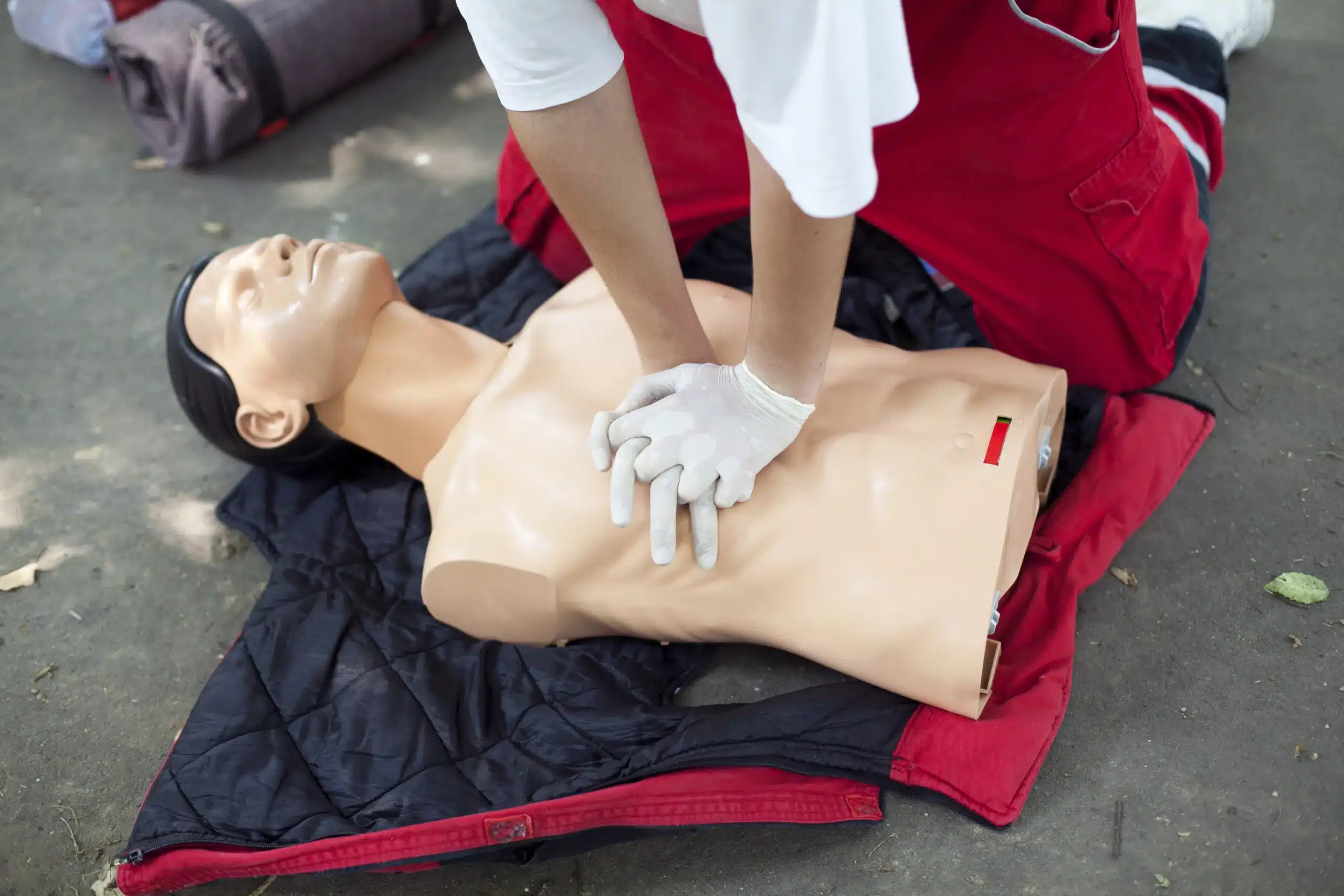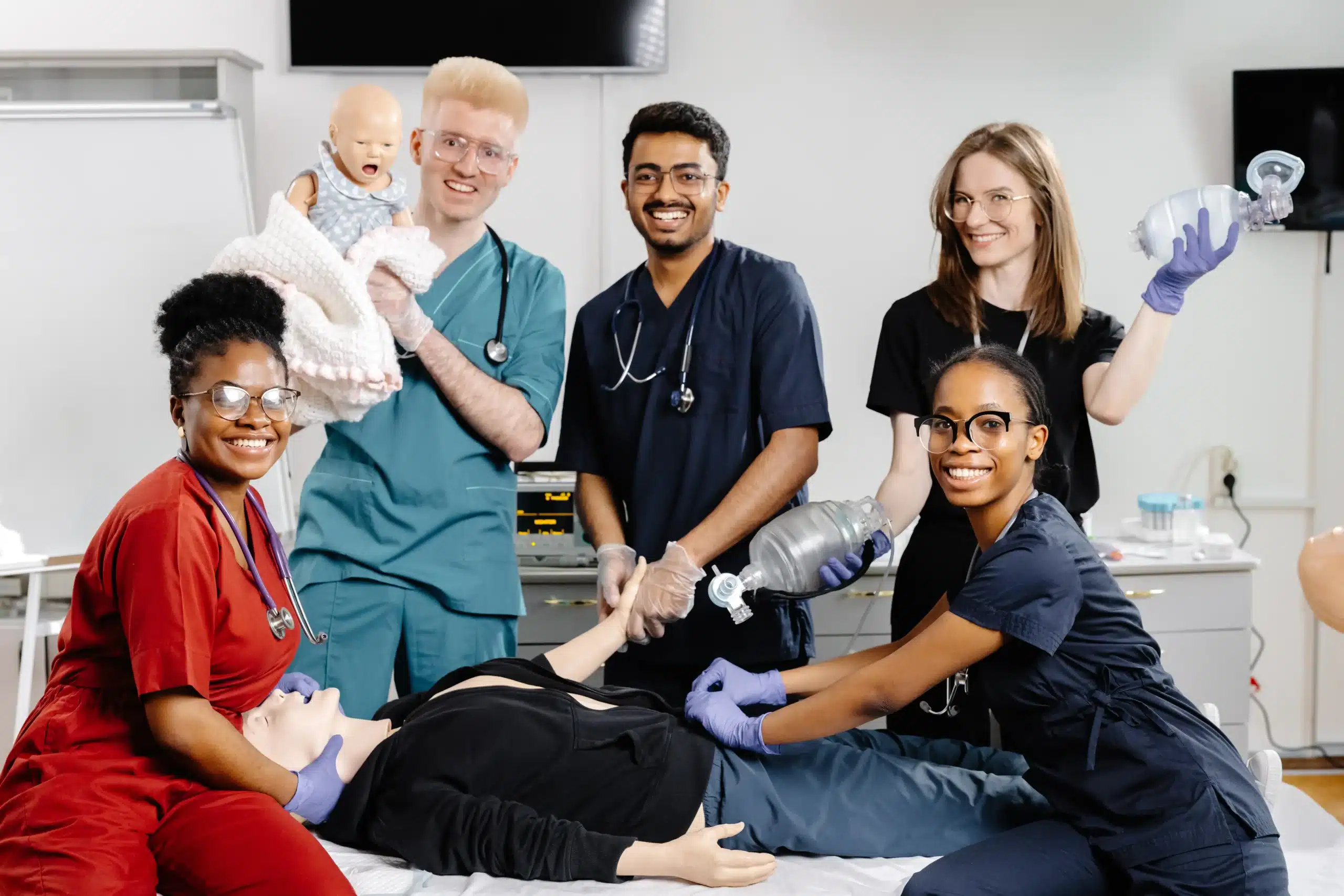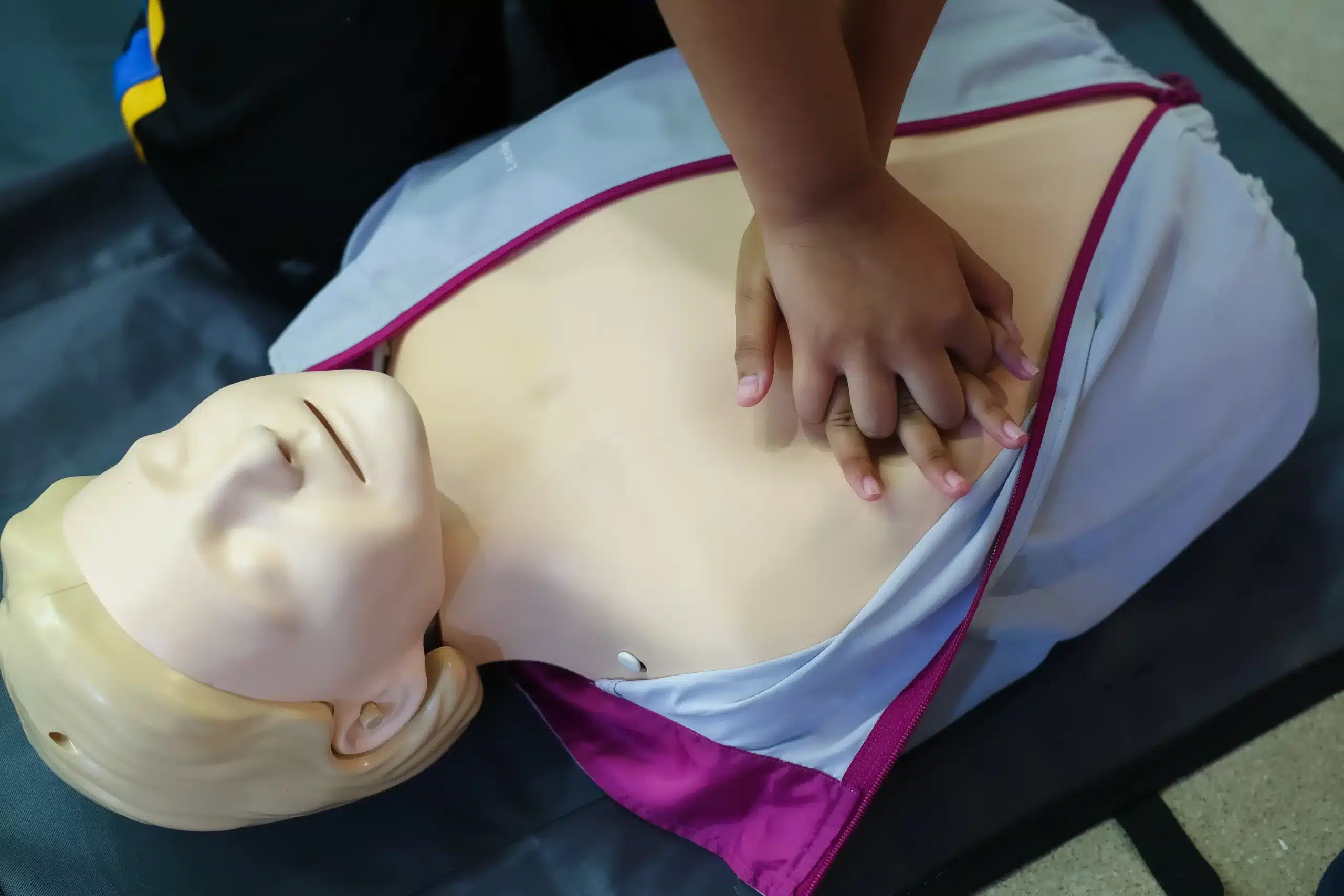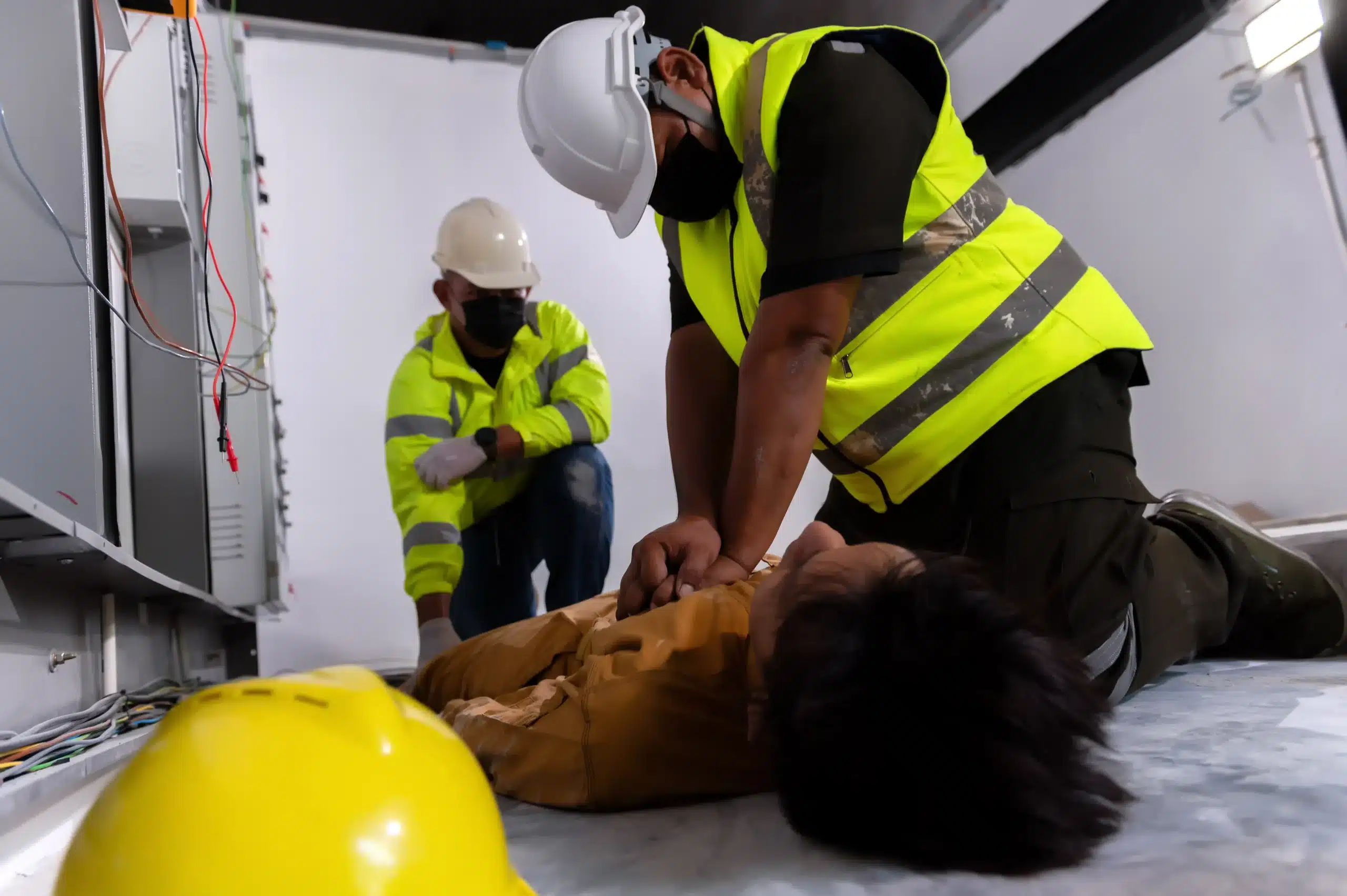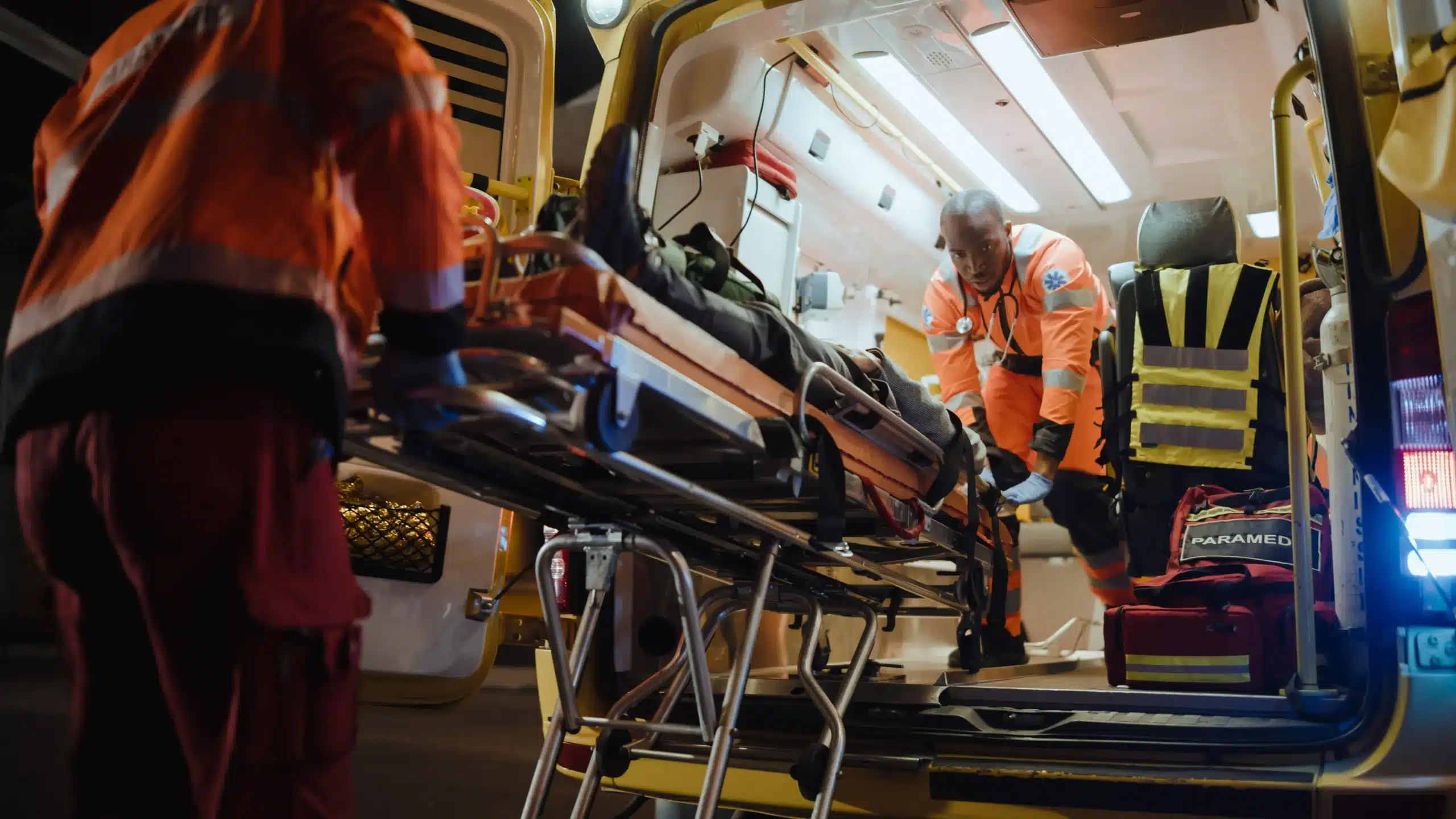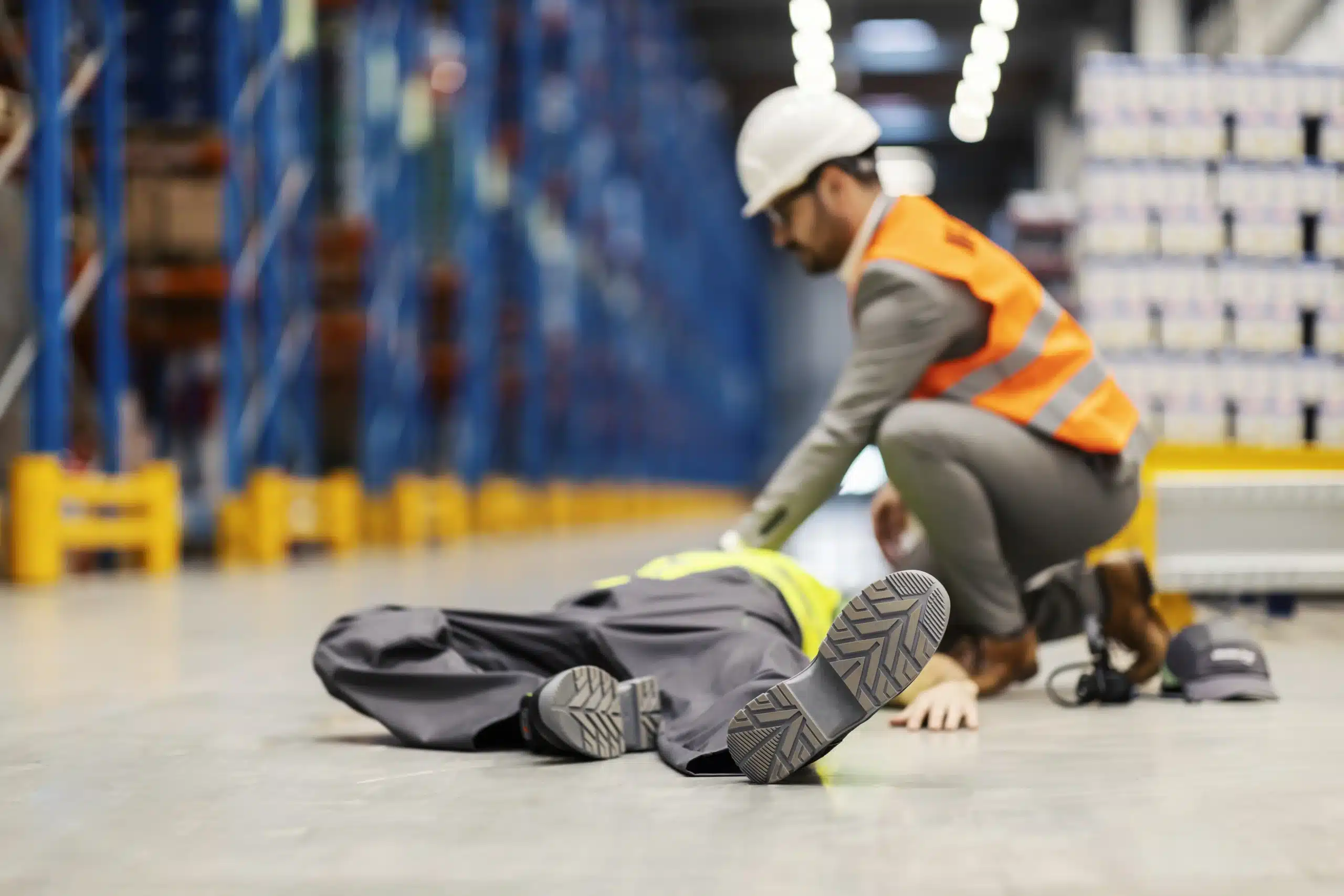Life is full of surprises, and not all of them are pleasant. Medical emergencies can happen anytime, anywhere, and being prepared can make all the difference. First-aid training equips you with the skills and confidence to respond effectively, potentially saving lives. This post is your go-to resource for understanding the world of first aid. We’ll cover everything from the basics of different training types to finding “first-aid classes near me.” We’ll also discuss the value of certification, how to prepare for your first class, and the importance of maintaining your skills. Plus, we’ll explore the costs involved and offer insights into applying your training in real-world situations. Whether you’re a parent, a teacher, a healthcare professional, or simply someone who wants to be prepared, this guide will empower you to take action when it matters most.
Key Takeaways
- First-aid skills are essential for everyone: Learning first aid equips you to handle a range of medical situations, from everyday injuries to life-threatening emergencies. Find a course that fits your schedule and learning preferences.
- Choose a reputable training provider: Look for established organizations like the American Red Cross or the American Heart Association, or consider trusted local providers. Make sure the course content aligns with your specific needs.
- Stay up-to-date with the latest practices: First-aid guidelines change, so refresh your skills and recertify regularly. Practice applying your knowledge in safe settings to build confidence and preparedness.
What Are First-Aid Classes?
First-aid classes teach you how to respond to emergencies. These classes cover a range of situations, from minor injuries like cuts and scrapes to more serious events like heart attacks and strokes. The goal is to give you the skills and confidence to stabilize someone until professional medical help arrives. Think of it as a practical toolkit for handling unexpected health crises.
Types of First-Aid Training
Several types of first-aid training cater to different needs. Standard first-aid courses teach basic skills, while more advanced classes cover CPR (Cardiopulmonary Resuscitation) and how to use an AED (Automated External Defibrillator). Some courses also focus on specific groups, like babysitting and childcare first aid or wilderness first aid. Organizations like the American Red Cross and the American Heart Association offer a variety of these courses. You can also find specialized training in areas like water safety. CPR Visalia offers a range of American Heart Association courses including BLS, ACLS, and PALS.
Why First-Aid Skills Matter
Learning first aid is an investment in yourself and your community. It empowers you to take action when it matters most. These skills can help you save lives, prevent injuries from worsening, and provide comfort to those in need. Knowing what not to do is just as important as knowing what to do. Common misconceptions about first aid can actually do more harm than good, so proper training is essential. In rural areas, where access to medical care might be limited, first-aid skills become even more critical, bridging the gap until professional help arrives. Having these skills can make all the difference in an emergency.
Find First-Aid Classes Near You
Finding the right first-aid class can feel overwhelming, but it doesn’t have to be. With a little planning, you can find a course that fits your schedule, budget, and learning style. Here’s how to get started:
Search Online
Start your search online. Use search engines like Google, DuckDuckGo, or Maps to discover classes near you. Many training providers list their schedules and course details on their websites. You can often filter by location, date, and course type, making it easy to narrow down your options. CPR Visalia lists all available BLS courses in Visalia online, for example. Don’t forget to check out review sites like Yelp to see what other students have to say about their experiences. If you have questions, look for websites with chat features to get quick answers. CprClassFinder is a great resource for finding CPR and first-aid classes.
Explore Local Resources
Think beyond online searches. Your community likely offers several first-aid training options. Check with local hospitals, community centers, fire departments, and recreation centers. These organizations often host first-aid courses or can point you in the right direction. Some organizations even offer mobile training units or pop-up courses, bringing the training directly to your neighborhood. This is especially helpful for those in rural areas with limited access to traditional training centers. MyCPR NOW discusses the importance of first-aid training in these communities.
Overcome Accessibility Challenges
Accessibility to first-aid training is crucial, but not always straightforward. Factors like language barriers, cultural beliefs, and location can create hurdles. If you face these challenges, don’t give up! Look for providers who offer courses in multiple languages or cater to specific cultural needs. Consider online or hybrid learning options if transportation or scheduling is a problem. MyCPR NOW offers insights into overcoming these challenges. Advocating for more accessible training in your community can also make a difference. Reach out to local officials or community leaders to discuss the need for increased funding or policy changes that support first-aid training initiatives. MyCPR NOW suggests strategies for improving access to first aid in rural communities.
Choose the Right First-Aid Class
So you’ve decided to learn first aid—fantastic! Choosing the right class is your next step. It’s a bit like finding the perfect pair of shoes: you need the right fit for your specific needs and preferences. This section will guide you through the process.
Assess Your Needs
Before you start browsing courses, take a moment to consider why you want first-aid training. Are you required to have it for your job, or are you preparing for a specific situation, like caring for children or exploring the outdoors? Identifying your goals will help you choose a class that covers the relevant skills. For example, healthcare providers may need specific certifications like Basic Life Support (BLS), while childcare providers might prioritize infant and child CPR. Consider also your current knowledge. Are you a complete beginner, or do you need a refresher course?
Compare Course Content and Formats
First-aid courses come in different formats. Some are entirely online, offering self-paced learning, while others are in-person, providing hands-on practice with instructors. There are also blended learning options that combine online modules with in-person skills sessions. Think about your learning style and schedule. Do you thrive in a classroom setting, or do you prefer the flexibility of online learning? Also, compare the course content. Some classes focus on basic first aid, while others cover more advanced topics like wilderness first aid or CPR training. Make sure the course you choose aligns with your needs and check whether it includes certification upon completion.
Evaluate Training Provider Quality
Not all first-aid training providers are created equal. Look for reputable organizations like the American Red Cross or the American Heart Association. These organizations have established standards and offer widely recognized certifications. You can also check if a provider is accredited by a national organization. Finally, don’t hesitate to read reviews and ask for recommendations. Choosing a quality provider will ensure you receive comprehensive and up-to-date training. If you’re in the Visalia, Tulare, or Delano area, Safety Training Seminars offers a range of courses and a low-price guarantee. Check their website for upcoming BLS courses in Visalia.
What to Expect in a First-Aid Class
So, you’ve signed up for a first-aid class—congratulations! Learning these vital skills can make a real difference. Here’s a glimpse of what awaits you:
Common Topics
First-aid classes cover essential life-saving procedures applicable to various situations. You’ll learn how to assess a scene for safety, recognize the signs of a medical emergency, and provide appropriate care until professional help arrives. Expect to cover topics like treating wounds, burns, fractures, sprains, and common medical emergencies such as choking, heart attacks, strokes, and allergic reactions. Many courses, like those offered by Safety Training Seminars, also address recognizing and responding to opioid overdoses, a critical skill. Understanding these core principles will equip you to handle emergencies confidently.
Hands-On Practice
First-aid isn’t just about theory—it’s about action. Your class will involve hands-on practice to build muscle memory and confidence. You’ll likely work with training mannequins to practice CPR, applying bandages and splints, and other essential techniques. This practical experience is invaluable for translating your knowledge into real-world action. Improving first-aid training programs requires hands-on components. Constructive feedback from your instructor will help you refine your skills and ensure you’re prepared. The goal is to make these actions second nature, so you can respond quickly and efficiently in a real emergency. Studies show that feedback from training mannequins improves proficiency.
Cultural Considerations
First-aid training also emphasizes cultural awareness. Different cultures may have varying beliefs and practices regarding health and medical interventions. A good first-aid course will address these considerations, teaching you how to approach emergencies with respect and understanding while still providing effective care. This is especially important in diverse communities like Visalia, Tulare, and Delano, California, where understanding cultural nuances can significantly impact the outcome of an emergency. Learn more about cultural considerations in first aid.
In-Person vs. Online First-Aid Classes
Deciding between in-person and online first-aid training? Both have their own advantages, so choosing the right format depends on your learning style, schedule, and preferences. Let’s break down the pros and cons of each.
Pros and Cons
In-Person Classes: In-person first-aid classes offer a hands-on learning experience. You’ll practice techniques directly with instructors, receive immediate feedback, and engage with other students. This format fosters a collaborative learning environment and allows you to ask questions in real-time. You’ll also typically receive your certification card the same day you complete the course. If you’re in Visalia, Tulare, or Delano, CA, Safety Training Seminars offers a variety of convenient in-person courses. However, in-person classes require a fixed schedule, which may not work for everyone.
Online Classes: Online first-aid classes offer flexibility and convenience. The self-paced format lets you learn the material when and where it suits you. This is particularly helpful for those with busy schedules or limited access to in-person training. The American Red Cross offers a variety of online first-aid and CPR training. However, online classes typically require an in-person skills session for full certification.
Hybrid Learning
Hybrid learning combines the best of both worlds. This blended learning approach offers the flexibility of online learning with the hands-on practice of in-person instruction. You can work through online modules at your own pace and then attend an in-person skills session to demonstrate your abilities and receive personalized feedback. This format caters to different learning styles and schedules. The Red Cross also offers blended learning courses that combine online and in-person components. If you value flexibility but also want the benefits of hands-on training, hybrid learning might be the perfect fit.
Understand First-Aid Class Costs
Knowing the cost of first-aid training is a practical first step. Let’s break down typical expenses, explore ways to save, and highlight why this training is a worthwhile investment.
Average Prices
First-aid class prices vary based on the type of training and your location. A basic first-aid course usually costs between $40 and $60 per person. More advanced training, like BLS CPR and AED, typically runs around $79.95. It’s always a good idea to compare prices from different providers to find the best fit for your budget. Safety Training Seminars offers a low price guarantee for classes in Visalia, Tulare, and Delano, CA. Check our BLS courses in Visalia.
Discounts and Free Options
Even though most first-aid classes have a fee, there are ways to reduce the cost or even find free training. Look into your local Community Emergency Response Team (CERT) program. CERT training often includes free CPR and first-aid certification. Many local fire departments also offer free CPR, AED, and first-aid courses to the public. Check with your employer, too. Some companies will cover the cost of these trainings, especially if it’s relevant to the workplace.
Value of First-Aid Training
Learning first aid is a valuable investment. It gives you the skills and confidence to handle emergencies effectively. Organizations like the Red Cross offer a variety of class formats to fit different learning styles and schedules. Their certifications are widely recognized and accepted. Plus, first-aid practices change over time, so ongoing training is important to stay up-to-date and ensure you’re prepared to help when needed. For other courses, see our RQI classes. Contact us to learn more.
First-Aid Certifications: Why They Matter
Knowing what to do in a medical emergency can make all the difference. First-aid certifications give you the confidence and skills to respond effectively, potentially saving lives. But not all certifications are created equal. Understanding the different types and their validity is key to choosing the right training for your needs.
Types of Certifications
Several organizations offer first-aid certifications, each with its own focus and curriculum. The American Red Cross offers a range of certifications, from basic first aid to advanced life support, covering essential skills like CPR, AED usage, and handling common injuries. The American Heart Association also offers various certifications, often geared towards healthcare providers and professionals. For workplace-specific training, organizations like Healthline First Aid offer courses tailored to meet OSHA requirements and other industry standards. Research the different options and choose a certification that aligns with your personal or professional needs. For example, childcare providers in Visalia, CA, might consider our EMSA-approved health and safety training. We offer a range of American Heart Association courses including BLS, ACLS, and PALS.
Validity and Renewal
First-aid certifications don’t last forever. Most certifications, including those from the Red Cross and similar organizations, are valid for two years. This is because medical best practices and guidelines change, so regular renewal ensures your skills and knowledge are current. Check with your certifying organization for specific renewal requirements. Staying up-to-date keeps your certification valid and equips you with the latest techniques for effective care in an emergency. At Safety Training Seminars, we offer various courses, including BLS and RQI classes, to help you maintain your certifications. We also have a low price guarantee. Contact us to learn more about our BLS courses in Visalia.
First-Aid Training Providers
Finding the right first-aid training program involves selecting a reputable provider. Whether you prefer a nationally recognized organization or a local option, understanding your choices is the first step.
National Organizations
Several respected organizations offer standardized first-aid and CPR training across the country. These include:
-
American Red Cross: The Red Cross offers a comprehensive selection of first-aid courses, from basic to advanced levels. They provide various learning formats, including online, in-person, and blended learning. Their certifications are widely accepted and typically valid for two years.
-
American Heart Association (AHA): The AHA focuses on CPR and emergency cardiovascular care, but they also offer first-aid training. Their courses, such as Heartsaver First Aid, equip individuals with essential life-saving skills. Find an AHA training center near you through their website.
-
National Safety Council (NSC): The NSC provides a range of safety training programs, including first aid. They offer various course options to meet diverse needs, from basic first aid to wilderness first aid.
Local Options in Visalia, CA
If you prefer in-person training and live in or near Visalia, CA, several local providers offer excellent first-aid courses.
Safety Training Seminars
Safety Training Seminars in Visalia provides a variety of American Heart Association courses, including first-aid training. They focus on delivering high-quality instruction at affordable prices, backed by a low price guarantee. You can view their course schedule and register on their website.
American Red Cross – Central California Region
The local Red Cross chapter serves the Central California region, including Visalia. They offer various first-aid and CPR classes. You can find class schedules and register online.
American Heart Association – Training Centers in Visalia
Several training centers in Visalia offer AHA-certified courses, including first aid. Use the AHA’s course locator to find specific locations and schedules.
St. John Ambulance
While St. John Ambulance primarily operates in Canada and the United Kingdom, you can check their website for any affiliated training centers in your area. If they don’t offer training locally, the other options listed above are excellent alternatives.
Prepare for Your First-Aid Class
So, you’ve signed up for a first-aid class—congratulations! Taking a first-aid class is a rewarding experience, equipping you with essential, potentially life-saving skills. To make the most of your upcoming training, let’s cover a few things you can do to prepare.
What to Bring
First things first, what should you pack for your first-aid class? Comfort is key. Wear comfortable clothing that allows for a full range of motion, since you’ll be participating in hands-on activities and practicing techniques. A notebook and pen are also must-haves for jotting down important information and any questions that come up. Your instructor may also provide specific materials, so check for any pre-class communications or review the course details on the Safety Training Seminars website.
Pre-Class Study Materials
While not always required, reviewing some basic first-aid concepts beforehand can be incredibly helpful. Think of it as a warm-up for your brain! Many organizations offer pre-study materials or online resources. Brushing up on essential first-aid techniques through online videos can significantly enhance your understanding and retention during the class. This way, you’ll walk into your first-aid training feeling confident and ready to absorb everything.
Maintain and Apply Your First-Aid Skills
Learning first aid isn’t a one-time event. It’s an ongoing process that requires you to refresh your knowledge and actively look for opportunities to put your skills into practice. This way, you’ll be prepared to act quickly and confidently in a real emergency.
Keep Your Knowledge Fresh
First aid guidelines and best practices evolve as medical knowledge grows. Regularly reviewing your first-aid training materials will help you stay current. Consider retaking a first-aid course every two years, or as recommended by certifying organizations like the American Heart Association or the Red Cross. This ensures your training aligns with current standards and incorporates new techniques and information. Look for engaging programs that offer hands-on practice and an updated curriculum.
Apply First-Aid Training in Real-World Situations
While we hope you never have to use your first-aid skills, being prepared is crucial. Look for opportunities to practice your skills in safe, controlled environments. This could include volunteering for community events, participating in mock drills, or even teaching basic first aid to family and friends. Empowering your community with first-aid knowledge strengthens everyone’s preparedness for emergencies, especially in rural areas where access to professional medical assistance might be limited. By actively maintaining and applying your first-aid skills, you become a valuable resource in your community, ready to respond effectively when it matters most.
Related Articles
- First-Aid Training in Tulare: Your Complete Guide – Visalia CPR Classes
- Pediatric CPR & First-Aid Training in Visalia – Visalia CPR Classes
- Why Workplace CPR and First-Aid Training Matters
- CPR & First-Aid Classes in Walnut Creek: Your Guide – Visalia CPR Classes
- CPR Classes in Visalia: Find the Right One For You – Visalia CPR Classes
Frequently Asked Questions
What’s the difference between first aid and CPR? First aid encompasses a broader range of skills for handling medical emergencies, from treating minor injuries like cuts and burns to stabilizing someone experiencing a heart attack or stroke. CPR is a specific technique within first aid that focuses on restoring breathing and circulation through chest compressions and rescue breaths. Think of CPR as one tool in the comprehensive first-aid toolkit.
How do I choose the right first-aid class for me? Consider your specific needs and goals. Are you required to have first aid for your job, or are you learning it for personal preparedness? Think about your learning style. Do you prefer in-person instruction or the flexibility of online learning? Finally, compare course content and make sure it aligns with your goals. If you’re unsure, reach out to the training provider directly. They can help you choose the best fit.
How long does a first-aid certification last, and how do I renew it? Most first-aid certifications are valid for two years. Renewal requirements vary depending on the certifying organization, but typically involve retaking the course. Check with your certifying organization for specific details. Staying current with the latest guidelines and techniques ensures you’re providing the most effective care.
What if I have accessibility challenges related to language, culture, or location? Don’t let these challenges stop you from learning first aid. Many providers offer courses in multiple languages or cater to specific cultural needs. Online or hybrid learning options can address transportation or scheduling issues. If you still face barriers, consider advocating for more accessible training in your community.
Are there ways to reduce the cost of first-aid training? Yes, several options can help you save money. Look into free community programs like CERT training, often offered through local fire departments. Some employers cover the cost of first-aid training for their employees. Also, compare prices from different providers to find the most affordable option. Some providers, like Safety Training Seminars, offer a low-price guarantee.
